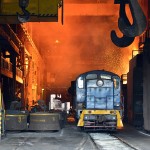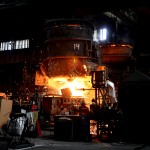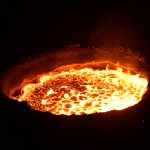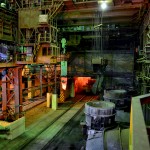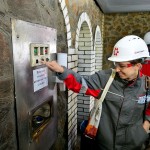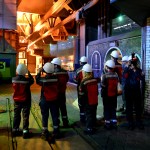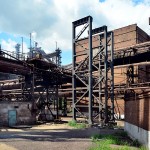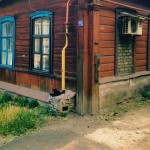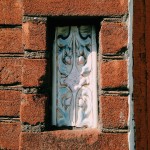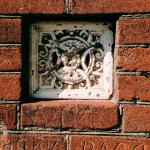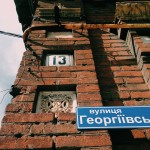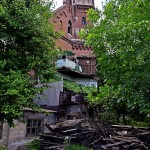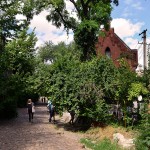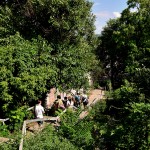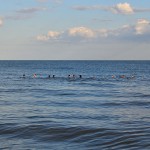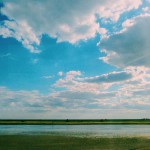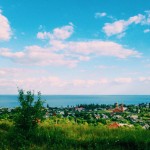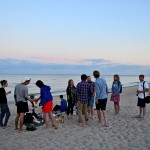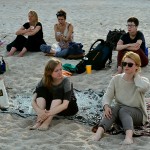Finally we made it to the oldest steel plant Illich Iron & Steel Works named after the Soviet “vozhd” Vladimir Illich Lenin. It was a grand reception – the plant’s management provided us with uniforms and helmets and showed us around the major industrial enterprise in the Donbas area.
At the main site of our visit — the converter plant — we saw the production of steel which uses huge mechanisms. Seeing the infinite tonnes of melted steel and monumental interiors (that looked like a movie set) was a good way to understand more deeply the avant-garde and futurist art of the early XX century that was inspired by Machines.
After the steel plant we were taken on a tour: Elena Daynitchenko from the Mariupol State University introduced us to the old town of Mariupol, that stretches towards the sea. The area is mostly made up of small houses in the “Russian style” — as Elena said, — and houses with brick mascarons.
There are also examples of the so called Hamper style (named after Dr.Hamper, who lived here at the turn of XIX-XX centuries and owned one of the most famous buildings in town). A Hamper style building is mainly constructed of red brick — the cheapest material at that time, — and features arched windows, brick patterns and extensions in the form of a Medieval castle tower.
Because of the brick Mariupol initially had a red appearance which was lost during the Soviet times since buildings were painted in different colours. In addition, they have not been restored, and often unique elements of the buildings were simply destroyed.
After the completion of our intensive four day program, it was time to chill. We went to the see side — Belosarayska Kosa — where we had picnic, shashliks and swam in the shallow Azov sea filled with small jelly fish.

